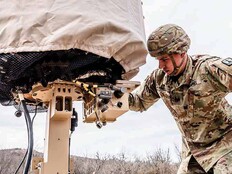FEDTECH: Explain what HHS Accelerate does.
ARRIETA: HHS Accelerate is an infrastructure that allows sharing of data from disparate data sets. It aggregates that information and allows it to be used at an individual level for individual execution, but also lets it be analyzed at a macro level for decision-making.
HHS Accelerate, which uses distributed-ledger technology, does three specific things. First, it lessens the burden on industry partners. If you’re doing business with HHS, we’re going to provide a record of all your historical interactions with us, so that you don’t have to respond to a request for information every time for the thousand analytic RFIs that come out. We want to lessen the cost to do business with HHS, so industry partners can focus their dollars on the challenges that we have.
Second, it empowers contracting professionals. We’ve actually built a recurrent neural network off of HHS Accelerate that reads 9,000 statements of work. Finally, it predicts whether or not the work could be performed by a government employee, or not, with a 90 percent accuracy rate. We are empowering the decision-maker with the information they need to make a tough decision.
VIDEO: What are the seldomly asked questions around emerging tech?
FEDTECH: What technology is used to make this work?
ARRIETA: It’s just a small layer of our technology stack. We’re using blockchain as an attestation layer and for integrity of data, and that’s it. If you know anything about a recurrent neural network, you know that sometimes you have to forget what has occurred before in order to make a new decision. It’s really hard to do that if you store everything in one database. We use the hashing mechanism of blockchain to connect three memories that are interrelated but that may need to be forgotten at any moment in time to drive a different outcome. Without being able to store information in multiple locations and keep them connected to one another, it’s very hard to do deep learning.












